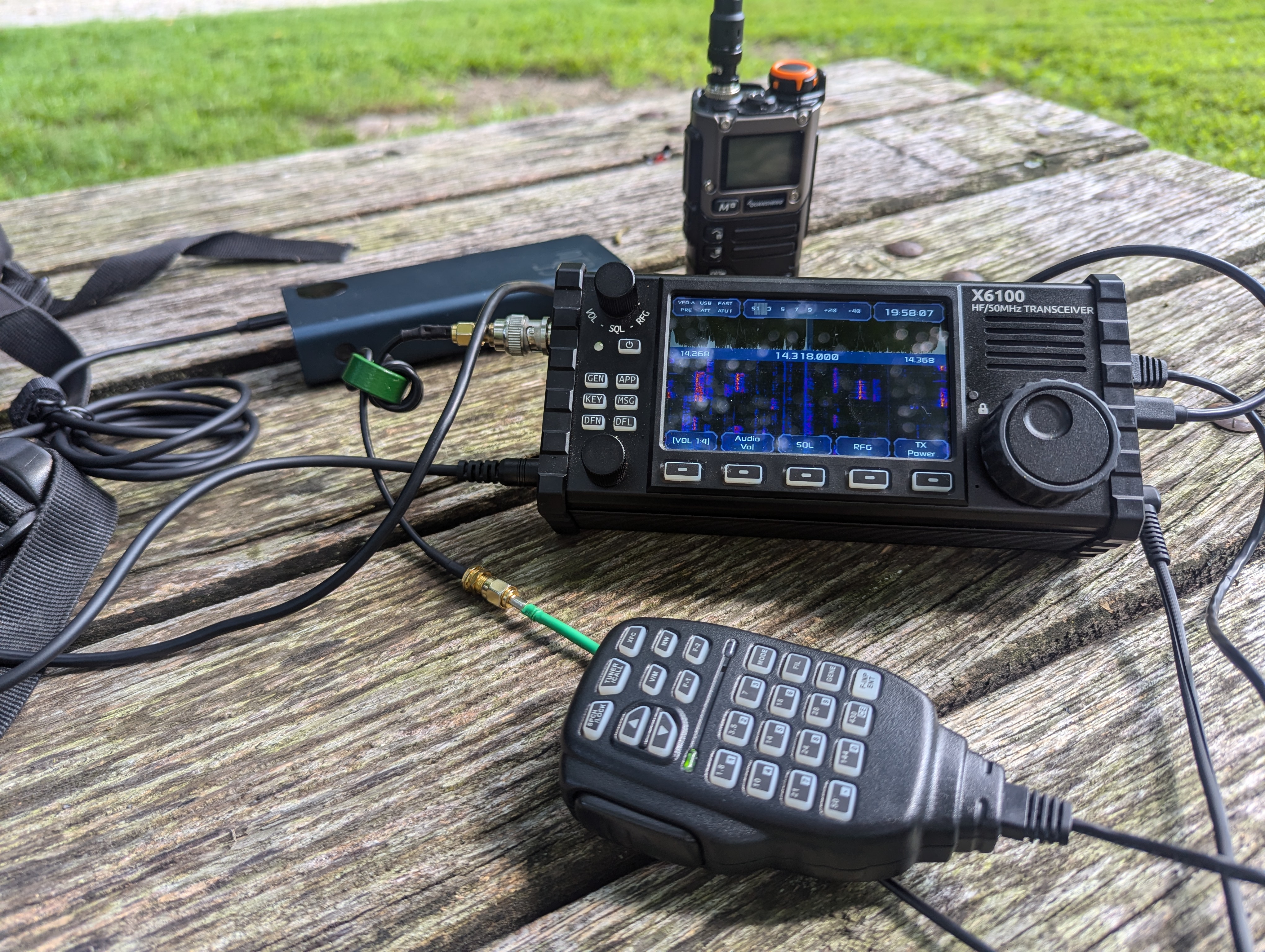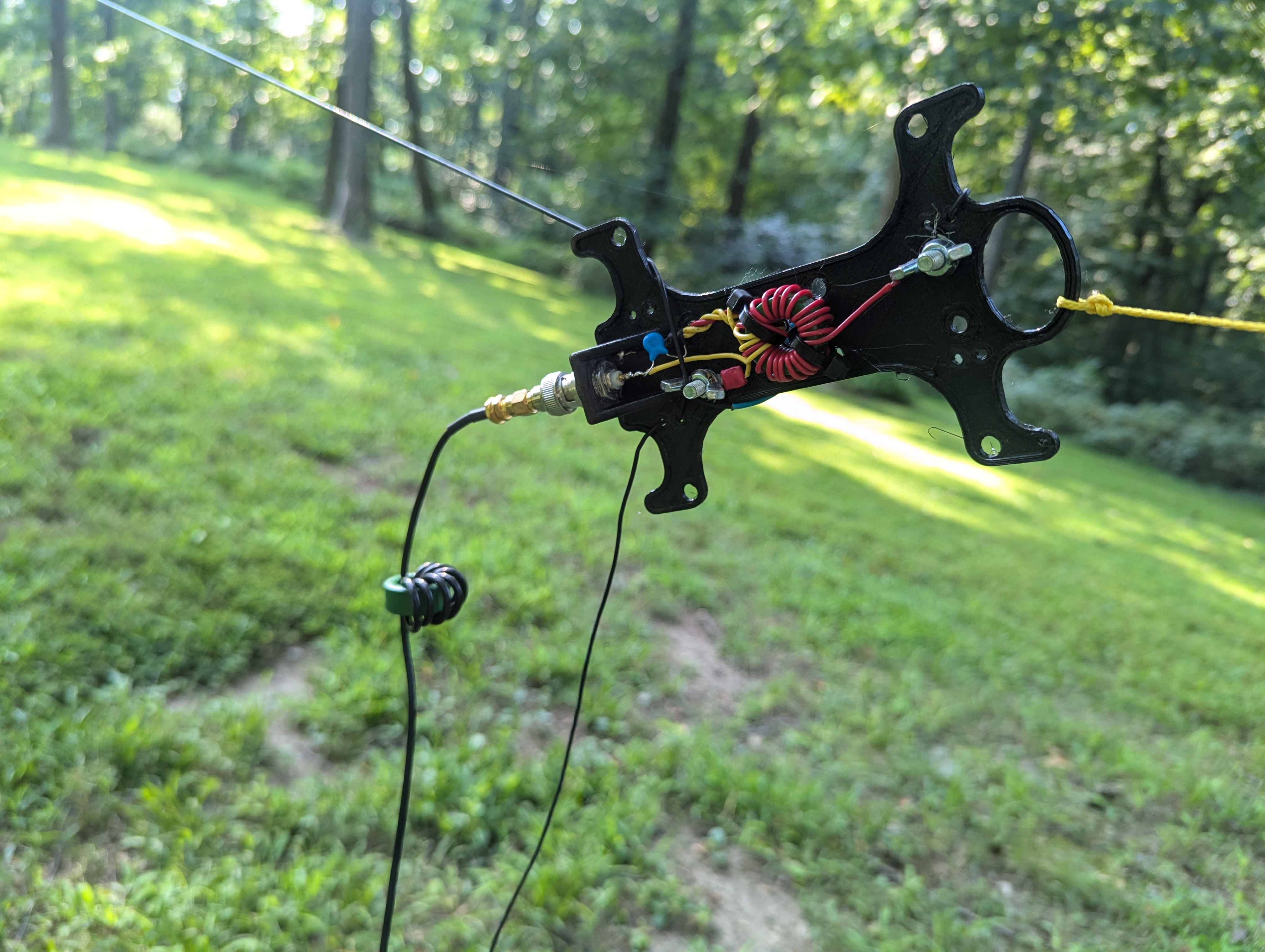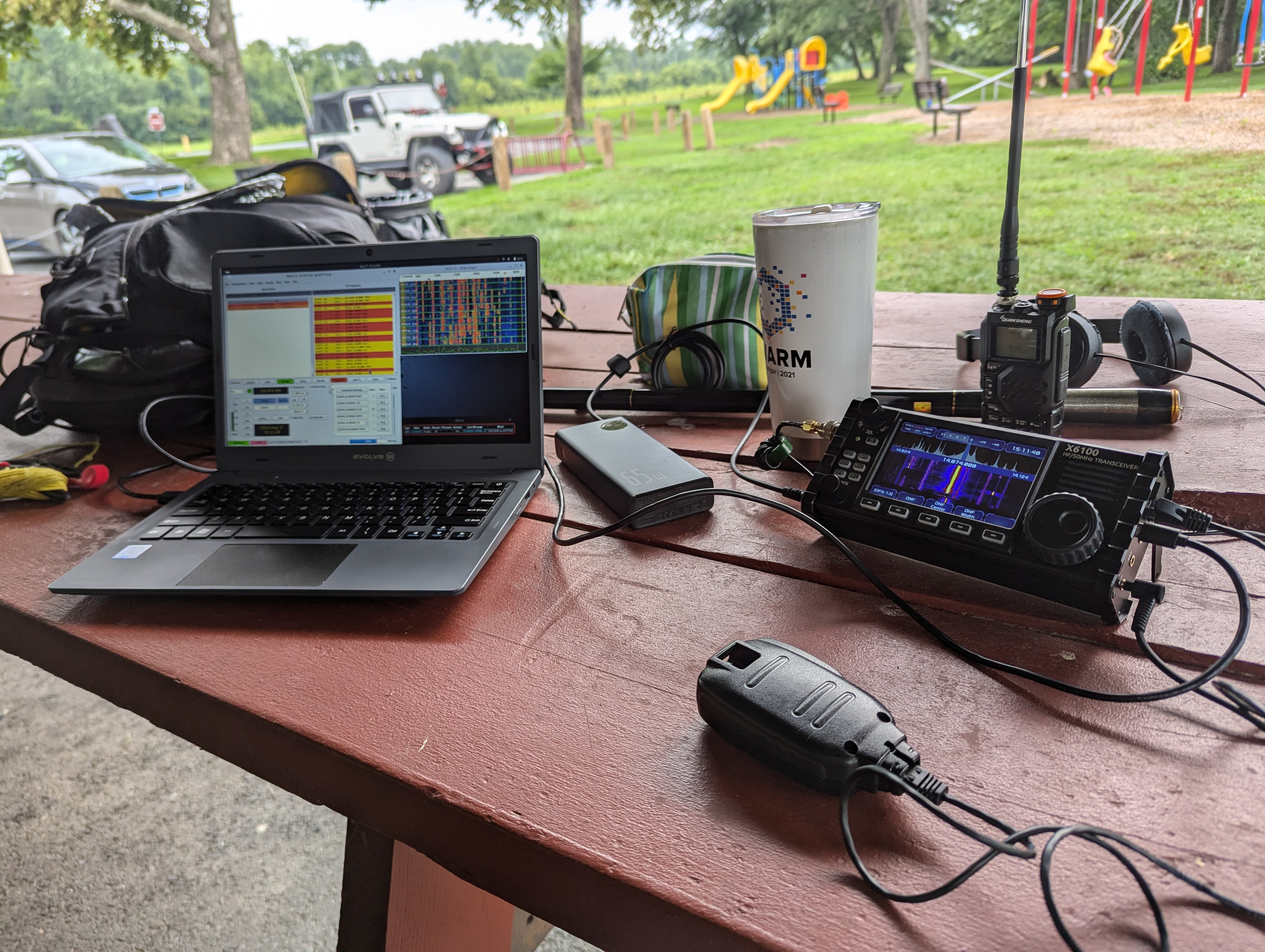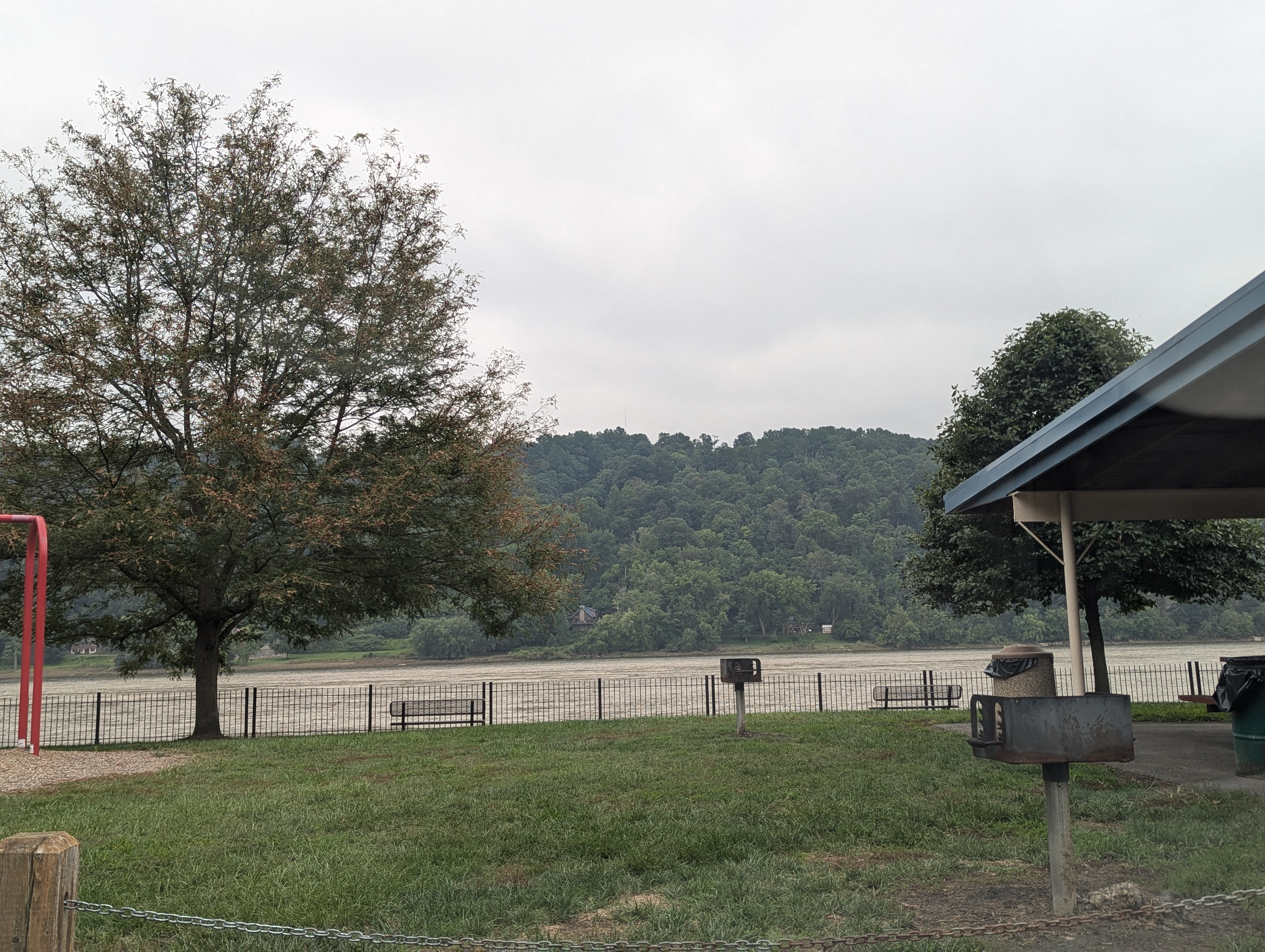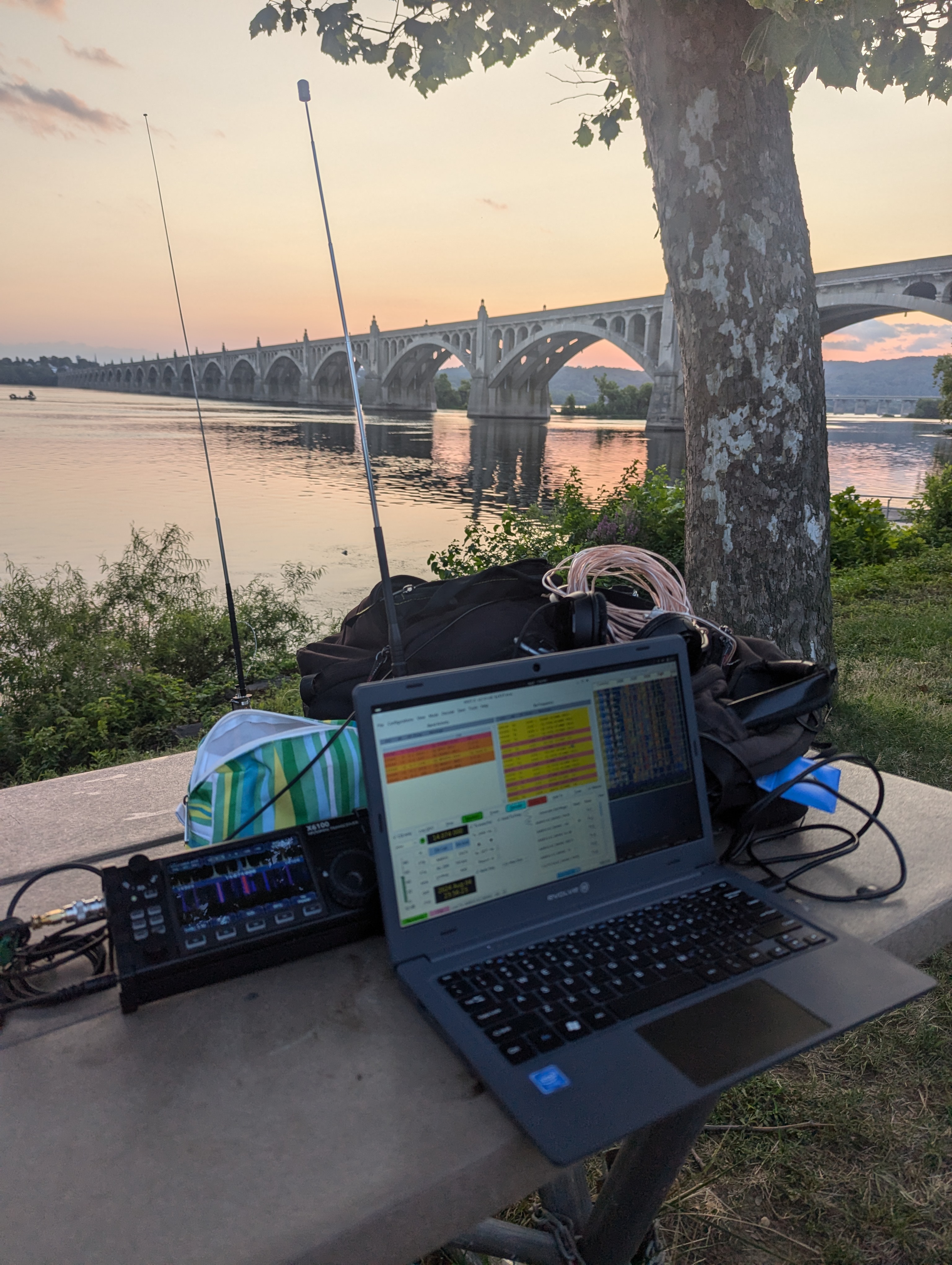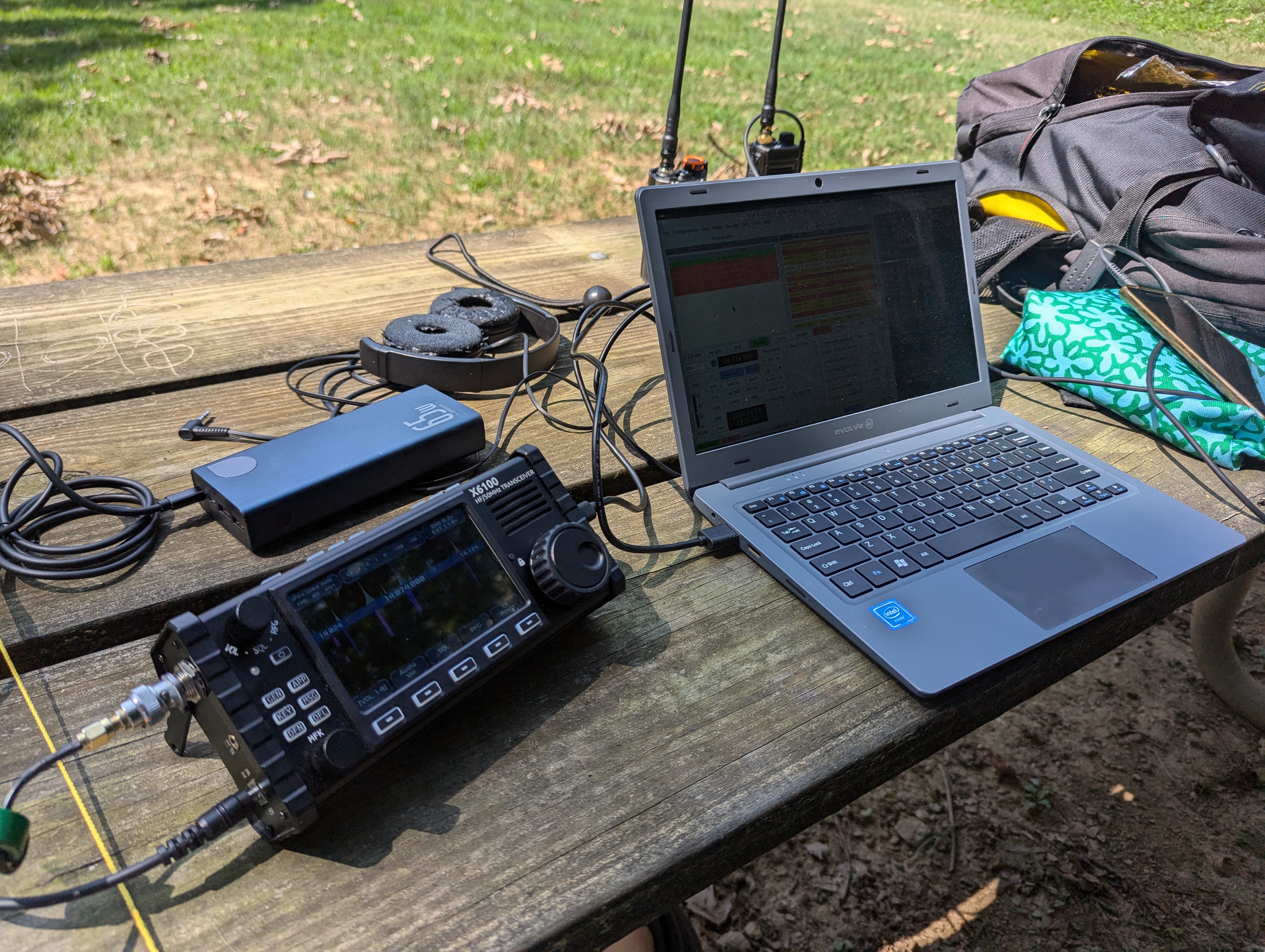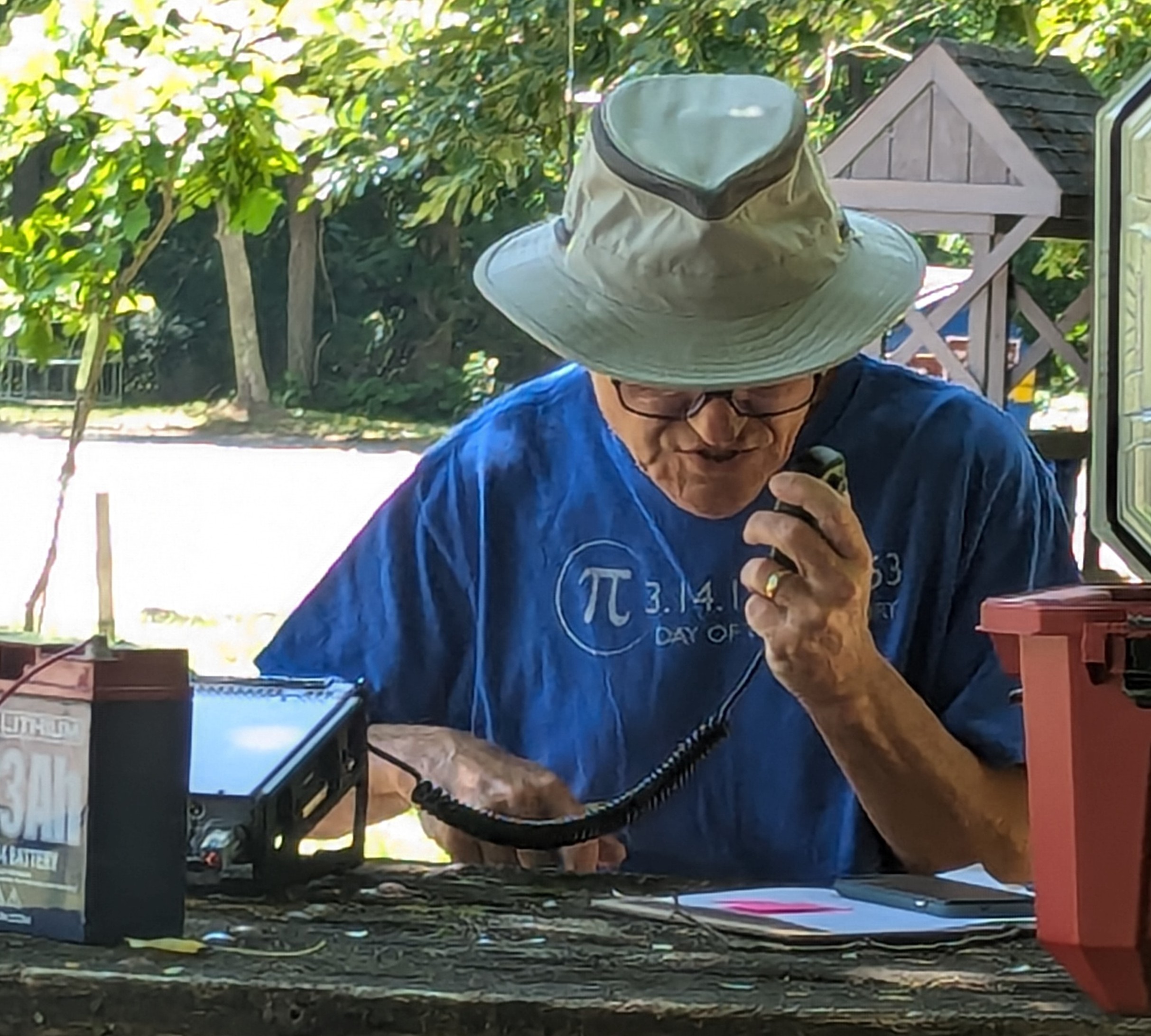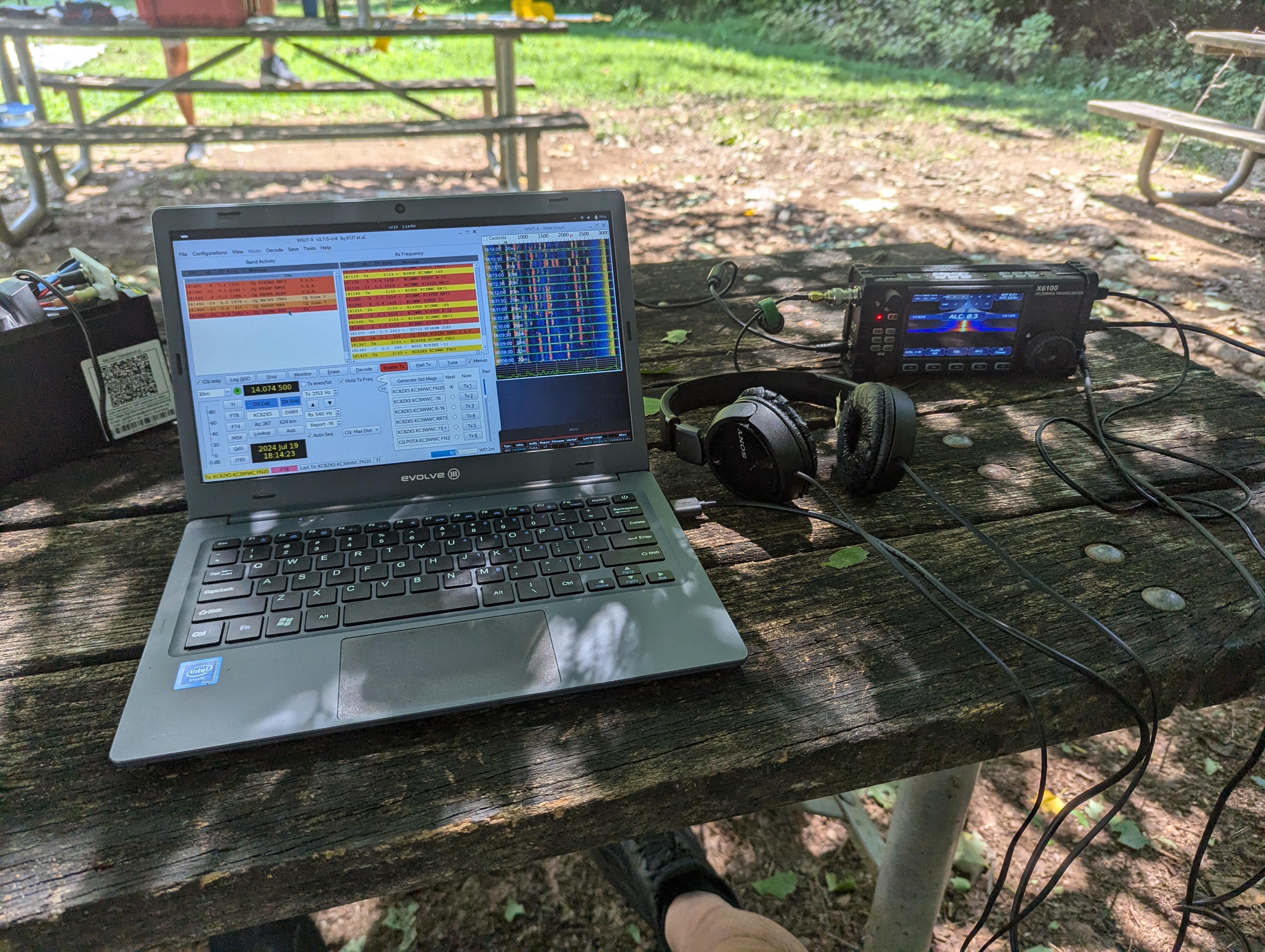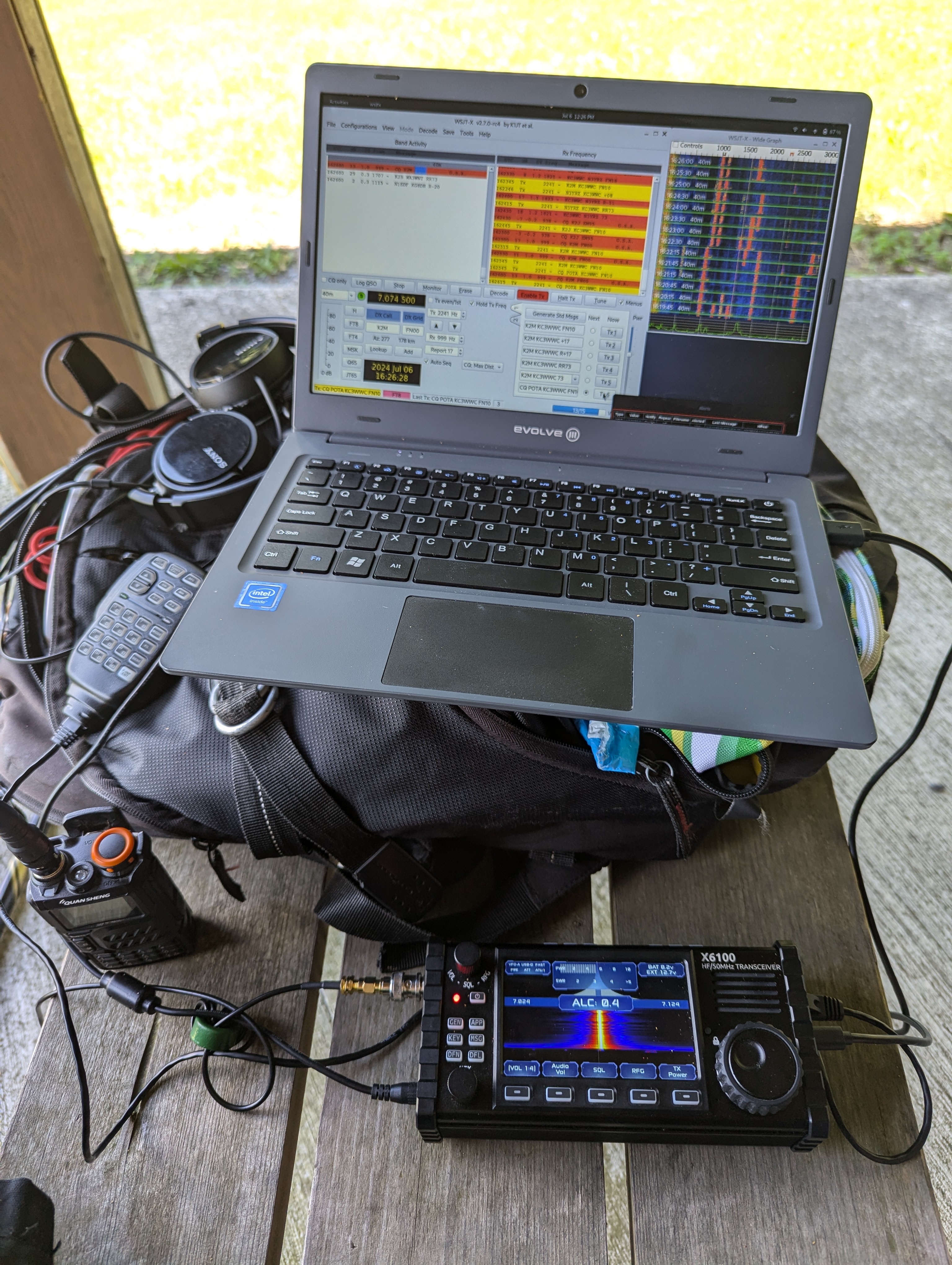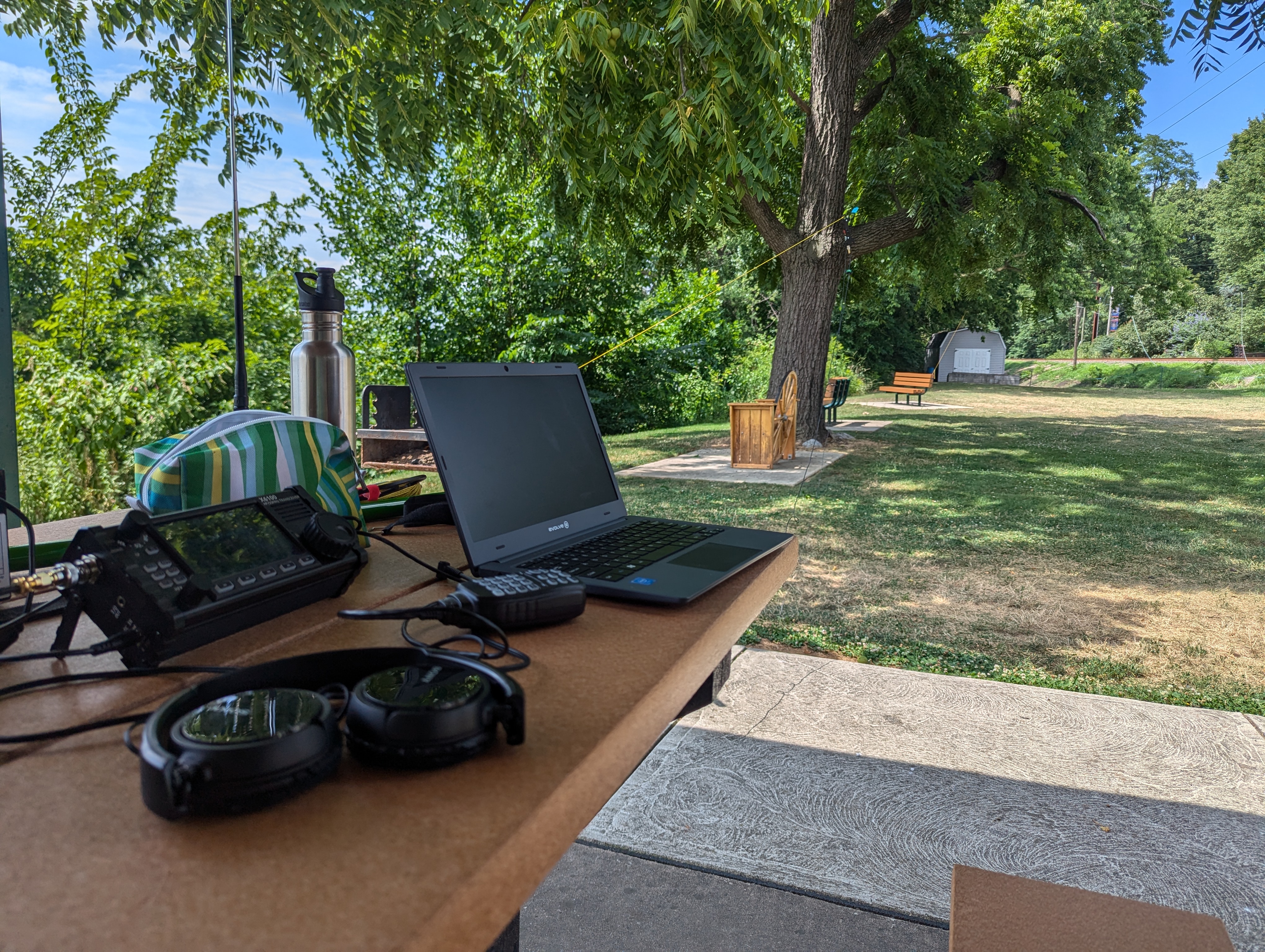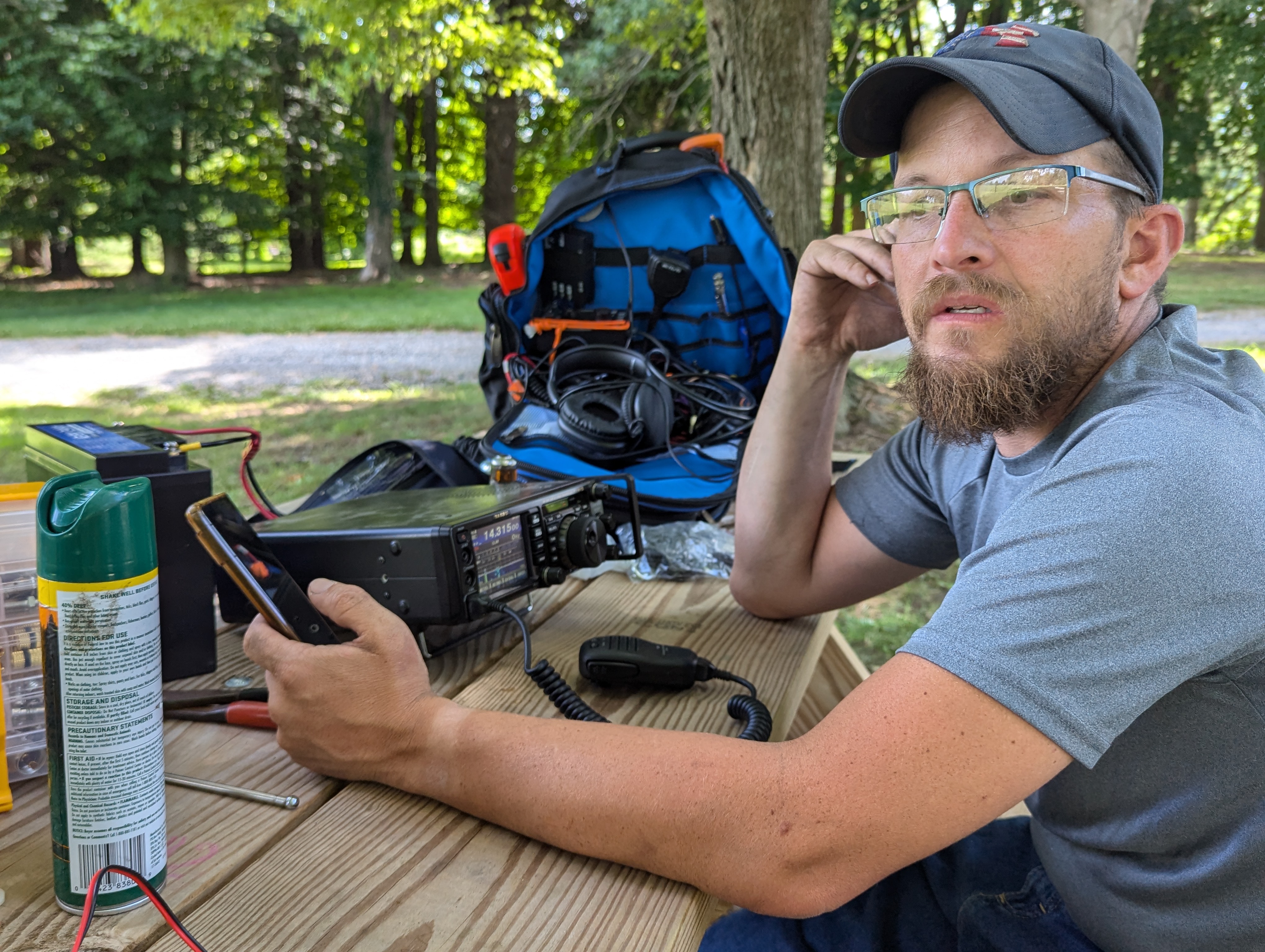I ran some errands and wandered off to Susquehannock State Park, US-1425 to play. I started with SSB phone, and immediately heard Hawaii. The bands were busy with QSO Parties for Hawaii, Kansas, and Ohio, so I kept hunting people and easily got my 13 contacts. I never switched to the computer for digital modes!
In addition to the QSO parties, I caught a contact from Italy and K8MRD of Ham Radio Tube in a park in Texas. I bothered one last operator with a little CW, but I failed pretty badly. The radio was decoding for me, but my keying wasn’t up to the job.
